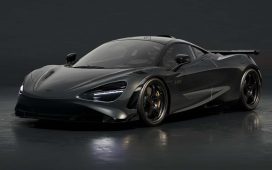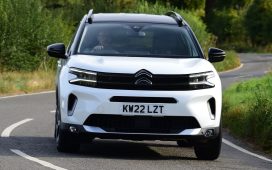The number one reason for people not buying electric cars is that they are expensive. But what about those who can afford to buy them? What’s holding them back? You already guessed: an electric vehicle’s range is still worse than a similar ICE vehicle, and charging is still perceived as a nightmare compared to filling the gas. Still, the recent CR test gives us exciting insights.
While the range of that iX rivals a similar gas-powered BMW X5, the iX in our story is just a prototype. It was fitted by the Michigan-based ONE energy start-up with two battery packs. The first one is the traction battery, consisting of LFP cells capable of 150 miles per charge, good for 99% of daily commute.
The other is the Gemini concept battery, which consists of high energy density anode-free cells and is used as a range-extender battery. Its job is to store energy for long journeys when it feeds the traction battery with the necessary energy. For now, we will ignore the expected price hike for such a system.
But, hey, for the sake of argument, those who pay around one hundred grand on a car expect the comfort of a more extended range – at least 500 miles / 800 km would be nice. So, how far are current expensive EVs to that milestone? Let’s find out.
Less is expected, but more is surprising
Consumer Reports took out 22 of the most popular new electric vehicles on a real-world test, both relatively affordable and expensive. Their EPA ranges vary between 220 and 405 miles, clearly less – or even far less – than the expectations I discussed earlier.
Actually, those EPA values are estimations combining simulated city and highway driving. So, it’s even harder for customers to make realistic assumptions about real-world highway ranges, where an electric vehicle consumes the most energy in the batteries.
This is where CR comes to the rescue, as their real-world test hints at how many miles/kilometers you can really expect from these EVs if you drive them at a steady 70 mph / 112 kph until the battery is depleted.
If you’re an electrohead (like me…), a shorter highway range than advertised is no longer news. But if you’re new to the EV world, a smaller value than advertised will most likely make you join the electromobility detractors’ group.
For starters, let’s see who the losers are in the CR test. That is, those EVs whose real-world highway range was less than the EPA range. Ten of the 22 cars tested fall into this category, which is 45%. Frankly, it’s better than what I expected.
In short, the cars with the longest EPA ranges (over 300 miles) in the pack showcase the most significant differences. Well, they are also big cars – the F150 is quite a big truck! – which translates to heavier cars, so those pretty high values are somehow understandable.
For the rest of the EVs here – most of them are SUVs – the differences are pretty low compared to their EPA ranges of more than 200 miles. In fact, the differences in percentage are more than reasonable, less – or even far less – than 10%. I must say I was expecting far worse values because of SUVs’ generally poorer aerodynamics.
Ok, now let’s take a look at the others – the EVs that fared better than EPA’s official range values. At first, you may be surprised, but remember that EPA’s estimation combines city and highway driving – more precisely, simulated driving.
Of course, the explanation regarding EPA’s estimations based on simulated driving scenarios still stands. But you’ll probably notice that Mercedes-Benz and BMW are the leaders, which simply proves that high-tech works. And it works big time.
Please observe that the Mercedes-Benz EQE and BMW i4 are sedans, so they are more aerodynamic and less heavy than their SUV siblings. This translates into better values for highway range, especially for the very fluid and efficient EQE, which adds almost a third more range than EPA’s estimates.
The hidden truth: fast-charging to only 80%
Ultimately, the glass is not half empty, as many would think. A difference of less than 10% between the official estimated range on the highway and the real-world highway range is just normal. However, reading between the lines, another issue arises.
CR drove these cars until their batteries were depleted. This means they didn’t stop when the computer warned them the battery was at 0% charge. A regular EV driver usually enters the “range anxiety” mode when the battery shows 10% or less, and he must find a charger within a few miles radius. Or else.
As you may or may not know, two values for an EV’s battery matter: nominal (usable) and maximum capacity. For instance, the F-150 Lightning Extended Range battery has a nominal capacity of 131 kWh, while the maximum capacity is 143.4 kWh.
Why this buffer of 12.4 kWh or 9.5%? Because of the Li-ion battery chemistry. In short, for the battery to last longer, it shouldn’t be fully charged or depleted. That’s why the car actually “lies” to you when it shows a 0% discharge level or 100% full charge. It has a reserve, and you shouldn’t use it, at least not too often.
Ideally, you should fast-charge the battery up to 80% and recharge when it’s down to 20% to preserve its longevity. But that means you should use only 60% of the battery capacity, and that’s the real barrier for today’s lithium-ion batteries.
Anyway, considering an average buffer of around 10% for the EV’s batteries in CR’s highway test, their real-world values are less impressive. For instance, you’d need to charge the F-150 after only 245 miles / 390 km, which is 75 miles / 120 km less than EPA’s estimated range.
You’ll probably want to fast-charge the battery on those long journeys of more than 1000 miles / 1600 km. Using a 150 kW DC fast charger, the 131 kWh pack requires 40 minutes from 15% to 80%. Can you hear the gas-powered F-150’s drivers making fun of you?
If you hit the road when the battery level is at 80% and then stop charging when the battery level drops to 15%, you should expect to travel around 208 miles / 335 km if you relate to EPA’s values. This is 112 miles / 180 km less range (or 35% less) than the EPA’s official value of 320 miles / 515 km for the maximum range.
By contrast, a similar V8 gas-powered F-150 can travel more than 500 miles / 800 km with a full tank on the highway. This is more than twice the Lightning! And the refill is much quicker, too. This is a strong argument for those using such a vehicle mostly on long journeys not to choose the electric variant of the F-150. Of course, emissions and pollutants won’t ever come into discussion.
Things are even worse if you consider CR’s real-world value of 270 miles / 434 km for the maximum range and the above charging scenario of 15-80%. In this case, you’ll most likely travel only 175 miles / 280 km between fast-charging sessions – three times less than the gas-powered F-150.
It’s almost a miracle the F-150 Lightning hit a new sales record in November, is it? Or maybe there just aren’t so many people who use such a truck for so many very long journeys after all. Who knows, perhaps it’s all right to stop more often for almost an hour of fast charging when taking a really long trip in an F-150.
The compromise theory
CR’s test can be perceived in two ways. The pessimistic one is that on really long journeys that require stopping to fast-charge the battery, many of the cars in this test will travel at most 200 miles / 320 km between charges. Don’t forget those very long charging times compared to filling the tank of gas-powered cars.
For the cars in the second pack – those where CR’s values were better than EPA’s – things are slightly better (or less bad?). You can expect some of them to travel 300 miles / 480 km between charges, but this still is far less than the 500 miles / 800 km we’re used to with gas-powered alternatives.
An optimistic perspective for the CR’s test is that it helps EV owners to have more down-to-earth expectations from their cars on those long journeys on the highway. Just like the real-world mpg is higher (or even much higher) than EPA’s official values for gas-powered vehicles, EVs’ highway range is shorter. In fact, it is much shorter in the up-to-80% fast-charging scenario.
It’s up to you to decide if “shorter” is really bad or if you can afford compromises, depending on your usage habits. While logic should prevail (for instance, we mostly use our cars on very short daily journeys, and it shouldn’t be normal to spew pollutants in the air we breathe), our choices rarely are based on this.
For now, Consumer Reports’ real-world test is proof that a more extended range is still costly. Price parity between battery electric and internal combustion engine vehicles is just around the corner. Still, we have to wait longer for the EVs to really be competitive regarding ranges and charging times. Until then, if you want an electric car, CR’s message is straightforward: learn to compromise.















